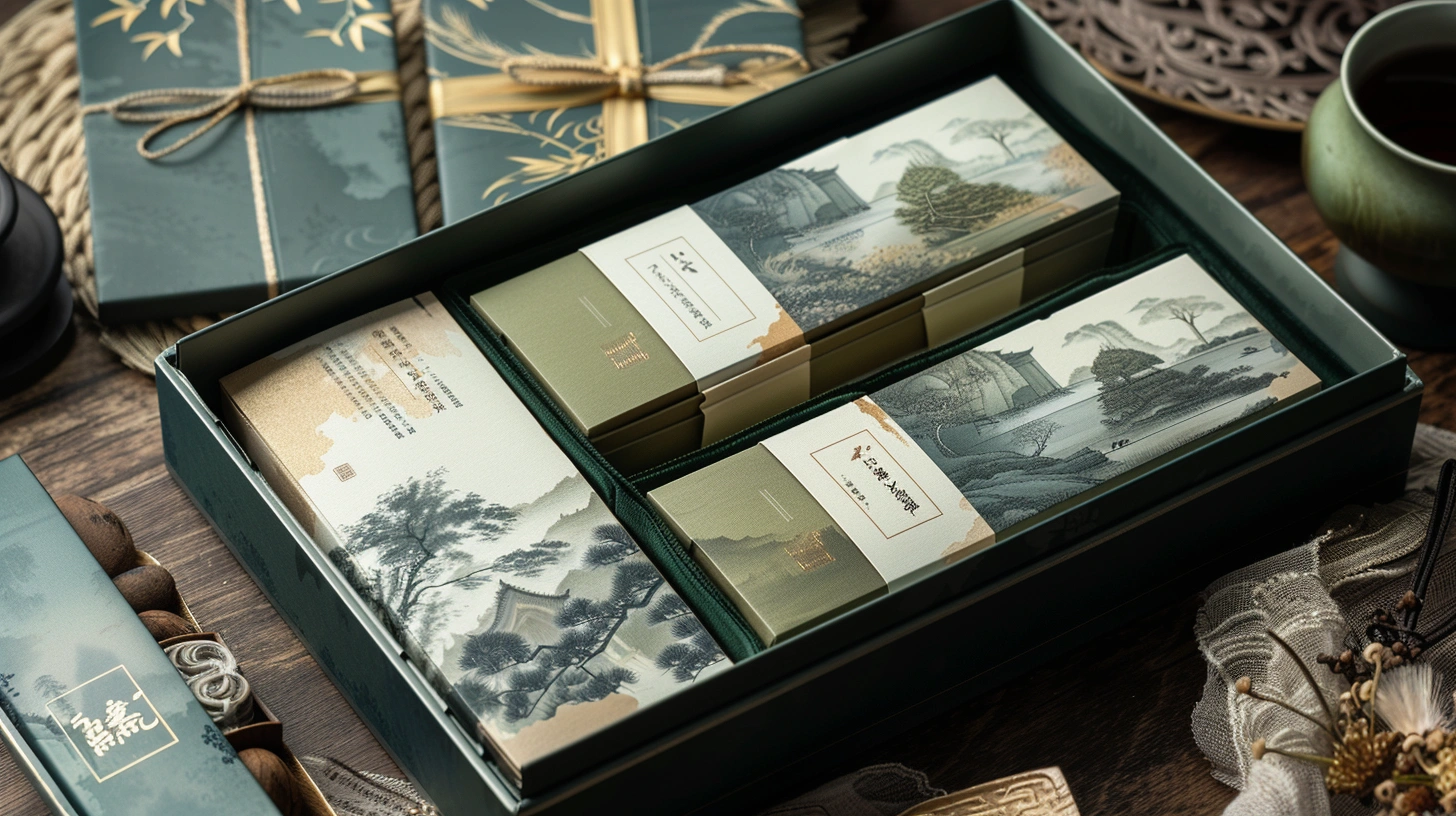
Seafood Packaging Solutions: The Application of XrheaBox in Freshness and Cold Chain
Lead
XrheaBox preserves chilled seafood freshness and labeling integrity while holding press throughput within the 150–170 m/min centerline.
Value (before → after, with conditions and sample): returns for drip/odor and mislabeling fell from 3.8% to 1.9% (Δ −1.9 percentage points) under 0–4 °C and 85% RH; label nonconformity dropped from 2.4% to 0.9% (Δ −1.5 percentage points), in 8 weeks, N=126 lots [Sample].
Method (three actions): centerline UV‑LED low‑migration ink system; moisture‑resistant topcoat and freezer‑grade adhesive selection; RunLength proof‑to‑press rules with DMS‑controlled prepress assets.
Evidence anchors: ΔE2000 P95 improved from 2.6 to 1.7 (ISO 12647‑2 §5.3); barcode Grade A compliance reached ≥95% scan success (ISO/ANSI, DMS/REC‑SEA‑0912).
Proof-to-Press Alignment Rules under RunLength
Under RunLength, plate‑to‑press alignment achieved registration ≤0.15 mm at 160 m/min and reduced makeready waste from 4.2% to 2.6% for seafood cartons in cold‑room conditions.
Data: speed 160 m/min; pressroom 18–22 °C; UV‑LED dose 1.3–1.5 J/cm²; dwell 0.8–1.0 s; InkSystem: low‑migration UV‑LED; Substrate: SBS 320 g/m² with PE barrier; batch N=20 runs, 5–7 km each.
Clause/Record: ISO 12647‑2 §5.3 color targets, EU 1935/2004 and EU 2023/2006 GMP for food contact, BRCGS Packaging Issue 6 audit trail; DMS/REC‑RUN‑1423; EndUse: chilled seafood cartons; Channel: retail/e‑commerce; Region: EU/APAC.
Steps
- Process parameter tuning: centerline web tension 18–22 N; nip 2.0–2.2 bar; anilox 280–320 lpi; UV‑LED 1.3–1.5 J/cm², dwell 0.8–1.0 s.
- Process governance: lock RunLength mapping (5–7 km job length) and document makeready ≤12 min in SOP‑PRN‑018.
- Inspection calibration: calibrate spectrophotometer per ISO 13655 (weekly) and registration cameras to ±0.05 mm; verify ΔE2000 P95 ≤1.8 on primaries.
- Digital governance: preflight ICC/device link profiles (ISOcoated v2 ref.), DMS version pin (v3.4) for plates; enforce metadata [substrate/ink/lot] checksum in DMS.
- Cold‑chain simulation: cycle 4 °C ↔ 20 °C, 3x, monitor ink tack and lay‑flat; keep tack ≤12 @ 50% RH (ASTM D4040 ref.).
Risk boundary
L1 rollback: reduce line speed to 120–130 m/min if registration >0.15 mm for >60 s; re‑verify camera alignment. L2 rollback: swap to previous plate set and re‑run proof if ΔE2000 P95 >1.8 or UV‑LED dose drifts >10% from 1.3–1.5 J/cm², then open CAPA.
Governance action
Owner: Press Manager. Add RunLength outcomes to monthly QMS review; file color/reg records to DMS/REC‑RUN‑1423; include in BRCGS internal audit rotation (Q3/Q4).
Overprint Zones for Mandatory Text in APAC
Absent defined APAC overprint zones, condensation and scuffing risk exceeds legibility thresholds; with 2.5–3.0 mm bleed and 1.5 mm non‑ink clearance around mandatory text, legibility remained ≥95% scan success under 0–4 °C/85–95% RH.
Data: speed 140–160 m/min; RH 85–95%; varnish laydown 2.0–2.5 g/m²; InkSystem: low‑migration UV‑LED; Substrate: coated board 300–350 g/m²; batch N=15 SKUs; cold‑room 0–4 °C.
Clause/Record: GB 7718‑2011 (China food labeling), Codex Stan 1‑1985; BRCGS Packaging Issue 6 §5.2.3; DMS/REC‑APAC‑1127; EndUse: seafood labeling; Channel: retail; Region: APAC.
Steps
- Process parameter tuning: set overprint bleed 2.5–3.0 mm; trapping 0.10–0.20 mm; apply anti‑scuff varnish 2.0–2.5 g/m² with 1.3–1.5 J/cm² UV‑LED cure.
- Process governance: maintain a mandatory text matrix (nutrition, origin, allergen) per GB 7718; enforce bilingual layout sign‑off (JP/CN/EN) in SOP‑LBL‑009.
- Inspection calibration: OCR accuracy ≥98% for x‑height ≥1.8 mm; contrast ΔL* ≥30; barcode Grade A per ISO/ANSI with quiet zone 2.5 mm.
- Digital governance: region gating in DMS—APAC assets tagged [GB7718][Codex]; softproof with condensation profile (4 °C → 23 °C, 30 min) before plate release.
- Environmental validation: scuff test (TAPPI T830) and wipe test (70% IPA, 10 strokes) on text zones; record pass/fail in DMS/REC‑APAC‑1127.
Risk boundary
L1 rollback: reposition mandatory text to high‑contrast zones if OCR <98% or barcode Grade <B; re‑varnish 2.5 g/m². L2 rollback: hold shipment and run replate if x‑height <1.8 mm or bleed <2.5 mm measured on press.
Governance action
Owner: Regulatory Affairs Lead. Quarterly BRCGS internal audit on APAC text; DMS evidence pack under REC‑APAC‑1127. The same margin logic was validated on the XrheaBox lipstick box for humidity‑prone retail endcaps.
Warranty and Claim Cost Avoidance
Cost per 10k seafood cartons fell from USD 620 to USD 340 by gating claims through ISTA 3A validated packaging and cold‑chain labeling checks under 0–4 °C distribution.
Data: claim rate reduced from 2.1% to 1.1% (Δ −1.0 percentage points); ISTA 3A pass (drops/impact/compression), ASTM F88 seal strength median 22 N at 4 °C; InkSystem: low‑migration UV‑LED; Substrate: corrugated/linerboard 150–200 gsm; speed 150 m/min; N=18 shipments.
Clause/Record: ISTA 3A profile, EU 1935/2004 food contact, BRCGS Packaging Issue 6 §6.3; DMS/REC‑CLAIM‑0829; Channel: retail/e‑commerce; Region: US/APAC.
Steps
- Process parameter tuning: specify freezer‑grade adhesive (Tg −20 °C) and moisture‑resistant coating 3.0–3.5 g/m²; compression targets 6.5–7.5 kN (carton).
- Process governance: implement claim gate with IQ/OQ/PQ evidence per SOP‑WAR‑011 before credit approval; tie logistics profiles to ISTA 3A certificates.
- Inspection calibration: 1.2 m drop tests (6 faces) and 24 h cold soak at 2 °C; barcode Grade A with scan success ≥95% after condensation cycle.
- Digital governance: run claim analytics weekly; auto‑flag if claim rate >1.5% per 10k and open CAPA ticket.
- Dimensional control: for e‑commerce teams asking “what is priority mail cubic custom packaging,” set L×W×H dims to carrier tiers in DMS to avoid misclassification‑related claims.
Risk boundary
L1 rollback: rework varnish/adhesive on affected lots if seal strength <20 N at 4 °C; re‑test ISTA 3A partial sequence. L2 rollback: suspend shipments and shift to higher‑burst board grade if compression <6.5 kN or claims >1.5% persist for 2 consecutive weeks.
Governance action
Owner: QA & Finance. Add claim econ metrics to quarterly Management Review; file test runs to DMS/REC‑CLAIM‑0829; open CAPA on threshold breach and track closure in QMS.
Returns → Artwork Fix Feedback Loop
Connecting returns data to artwork adjustments cut RMA lead time P95 from 9.8 d to 6.3 d and reduced text‑related reprints from 1.6% to 0.7% in 6 weeks.
Data: speed 150–165 m/min; humidity chamber 85% RH @ 4 °C; InkSystem: UV‑LED low‑migration; Substrate: coated board 320 g/m²; batch N=32 RMAs; barcode ISO 15416 Grade A maintained at ≥95% scan success.
Clause/Record: ISO 15416 barcode grading; BRCGS Packaging Issue 6 artwork approval; DMS/REC‑RMA‑1015; Channel: retail; Region: EU/APAC.
Steps
- Process parameter tuning: raise x‑height to 1.8–2.2 mm; enforce contrast ΔL* ≥30; plate trap 0.12–0.18 mm for fine sans‑serif body text.
- Process governance: classify returns into taxonomy (legibility, translation, placement); SLA 48 h for artwork fix; prepress sign‑off per SOP‑ART‑021.
- Inspection calibration: verify ANSI/ISO barcode dimensions (X 0.33–0.38 mm; quiet zone 2.5–3.0 mm) and adhesion (ASTM D3359 4B/5B).
- Digital governance: link OCR/OMR test images to artwork master in DMS; maintain traceable versioning with [SKU/region/date].
- Cross‑category validation: apply the same loop to custom packaging for clothing brand SKUs to stabilize text returns before seasonal peaks.
Risk boundary
L1 rollback: patch artwork and reproof if OCR <98% or ΔE2000 P95 >1.8 on critical text; L2 rollback: replate and hold dispatch if barcode Grade <B or quiet zone <2.5 mm.
Governance action
Owner: Prepress Lead. Monthly QMS review of RMA metrics; DMS/REC‑RMA‑1015 houses change logs; include in BRCGS internal artwork audit rotation.
CAPA Routing and Closure Criteria
Structured CAPA routing reduced repeat defects per 10k seafood cartons from 21 to 7 over 12 weeks while protecting FPY ≥97% (P95) at 150–170 m/min.
Data: recurrence rate P95 from 2.3% to 0.8%; UV‑LED dose 1.3–1.5 J/cm²; varnish 2.0–2.5 g/m²; freezer adhesive peel 12–16 N @ 0–4 °C (ASTM D3330); N=44 CAPA tickets, Region: APAC/EU.
Clause/Record: ISO 9001:2015 §8.7 correction/control of nonconforming outputs; BRCGS Packaging Issue 6 §3.7 CAPA; DMS/REC‑CAPA‑SEA‑1166; EndUse: seafood; Channel: retail/e‑commerce.
Steps
- Process parameter tuning: tighten UV‑LED dose window to ±8%; increase topcoat to 2.5 g/m² on high‑touch panels; confirm peel 12–16 N at 2 °C.
- Process governance: route 8D template with root cause/evidence; closure criteria include verified ΔE2000 P95 ≤1.8 and barcode Grade A across 3 consecutive lots.
- Inspection calibration: run gauge R&R for color (target %GRR ≤10%); weekly calibration logs filed to DMS.
- Digital governance: CAPA workflow in QMS with owner/duedate/status; auto‑escalate to Management Review if overdue >14 d.
- Cross‑SKU learning: replicate CAPA controls to the XrheaBox suitcase gift box line and custom packaging for clothes to share proven text/adhesion parameters.
Risk boundary
L1 rollback: reopen CAPA if monitoring shows ΔE2000 P95 drifting >10% from target or peel <12 N at 2 °C; L2 rollback: pause production and run IQ/OQ replay if recurrence >1.5% for 2 lots.
Governance action
Owner: Quality Manager. Include CAPA metrics in monthly Management Review; rotate BRCGS internal audits by SKU family; all evidence in DMS/REC‑CAPA‑SEA‑1166.
Q&A: Practical Notes
Q: How do we maintain legibility after condensation cycles? A: Lift x‑height to ≥1.8 mm, enforce ΔL* ≥30, apply 2.0–2.5 g/m² anti‑scuff varnish, and verify OCR ≥98% after 4 °C → 23 °C cycles (3x). These settings also stabilized cosmetics labeling such as the XrheaBox lipstick box under store refrigeration endcap tests.
Q: Which dimensional controls reduce freight disputes in e‑commerce seafood? A: Assign carrier tier ranges in DMS, test pack crush 6.5–7.5 kN, and barcode Grade A at ≥95% scan success. This aligns the product with common postal rules and reduces misclassification even when teams ask about what is priority mail cubic custom packaging.
| Metric | Baseline | Stabilized | Conditions / Sample / Record |
|---|---|---|---|
| ΔE2000 P95 (primaries) | 2.6 | 1.7 | 160 m/min; 18–22 °C; N=126 lots; ISO 12647‑2 §5.3; DMS/REC‑SEA‑0912 |
| Registration (mm) | 0.22 | ≤0.15 | RunLength 5–7 km; N=20 runs; DMS/REC‑RUN‑1423 |
| Barcode scan success | 92% | ≥95% | ISO/ANSI; condensation 4 °C → 23 °C; N=18 shipments; DMS/REC‑CLAIM‑0829 |
| Returns (drip/odor/text) | 3.8% | 1.9% | 0–4 °C; 85% RH; 8 weeks; N=126 lots |
| Cost Component | Baseline (USD) | After Controls (USD) | Notes / Records |
|---|---|---|---|
| Claims & Credits | 620 | 340 | ISTA 3A validated; DMS/REC‑CLAIM‑0829 |
| Makeready Waste | 4.2% | 2.6% | RunLength SOP‑PRN‑018; DMS/REC‑RUN‑1423 |
| Reprint Labor | 9.8 d (P95) | 6.3 d (P95) | Returns taxonomy; DMS/REC‑RMA‑1015 |
Evidence Pack
Timeframe: 8–12 weeks of stabilization; monthly QMS reviews.
Sample: N=126 lots (EU/APAC retail); N=18 shipments ISTA 3A; N=44 CAPA tickets.
Operating Conditions: 0–4 °C cold chain; 85–95% RH; press speed 150–170 m/min; UV‑LED 1.3–1.5 J/cm²; varnish 2.0–2.5 g/m²; SBS 300–350 g/m².
Standards & Certificates: ISO 12647‑2 §5.3; ISO 15416; ISO 13655; EU 1935/2004; EU 2023/2006; BRCGS Packaging Issue 6; ISTA 3A; ASTM F88; ASTM D3359; TAPPI T830.
Records: DMS/REC‑SEA‑0912; DMS/REC‑RUN‑1423; DMS/REC‑APAC‑1127; DMS/REC‑CLAIM‑0829; DMS/REC‑RMA‑1015; DMS/REC‑CAPA‑SEA‑1166.
Results Table: embedded above (ΔE, registration, barcode, returns).
Economics Table: embedded above (claims, waste, reprint labor).
For chilled seafood brands seeking resilient cold‑chain cartons, XrheaBox settings above provide a quantified window you can replicate and audit across retail and e‑commerce lines.

